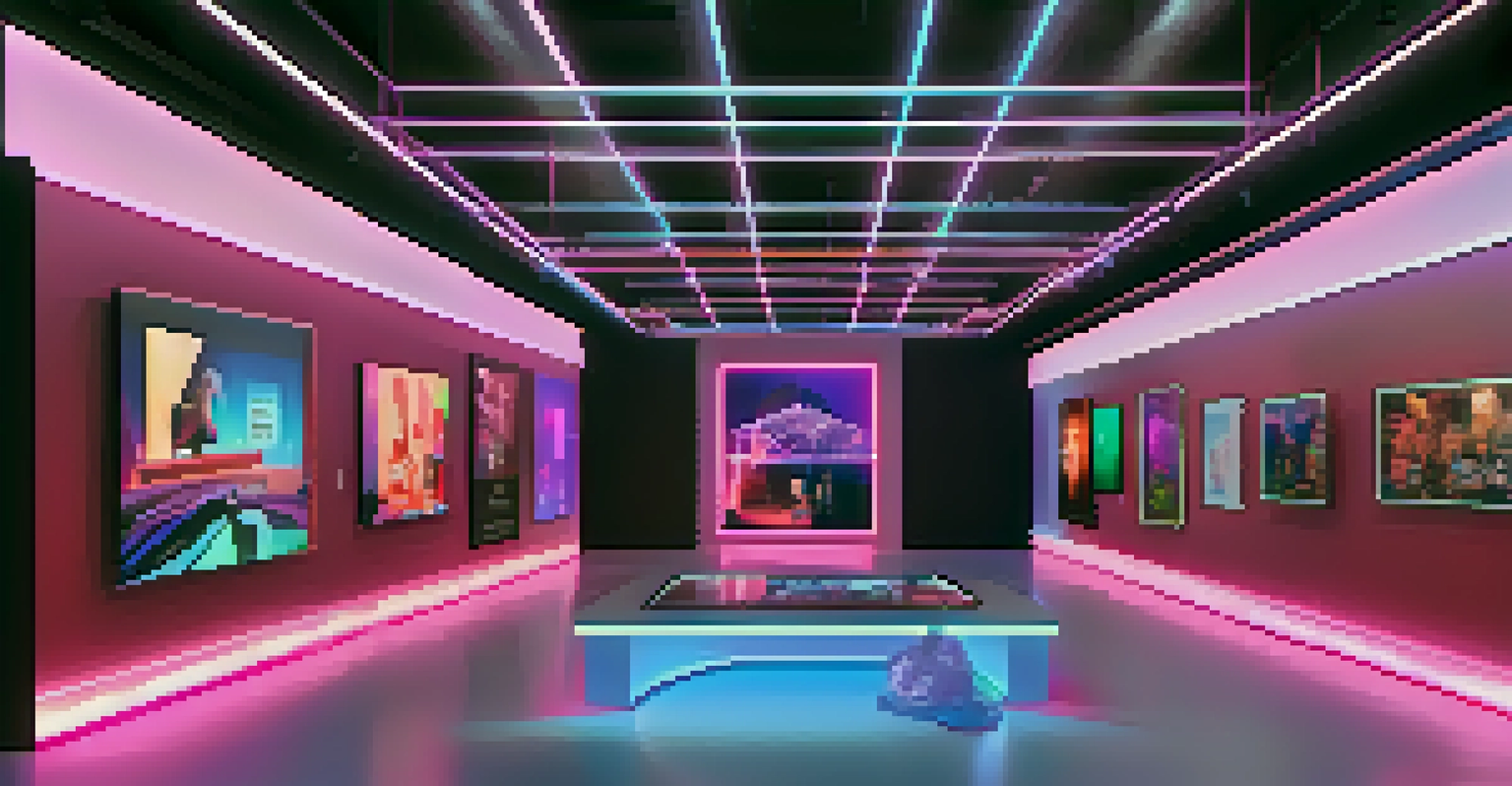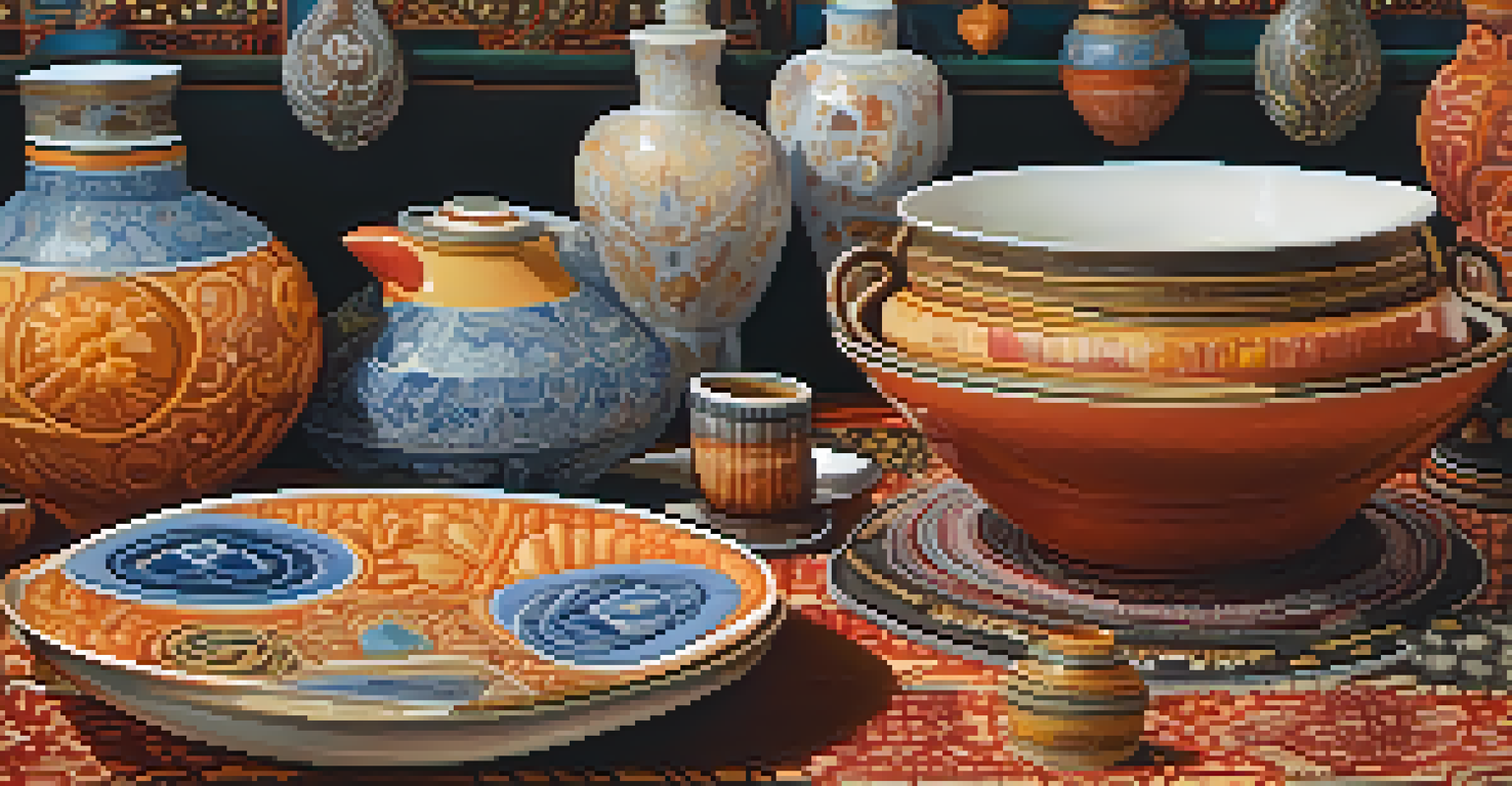The Evolution of Feminism in Contemporary Art Practices

Understanding Feminism's Roots in Art History
Feminism has deep roots in art history, tracing back to the suffrage movement in the early 20th century. Artists like Georgia O'Keeffe and Frida Kahlo challenged traditional gender roles through their work. Their art not only reflected personal experiences but also highlighted women's issues, setting the stage for future feminist movements in art. This historical context is crucial for understanding the evolution of feminist art practices today.
Feminism is not about being anti-men. It’s about being pro-women.
As these early female artists gained recognition, they inspired subsequent generations to explore themes of identity, gender, and power. The rise of feminist art in the 1970s, characterized by collectives like the Guerrilla Girls, further propelled these conversations into the public sphere. Their provocative installations and performances called out sexism in the art world and society at large. This activism was pivotal in shaping contemporary feminist art.
Related Resource
Today, the legacy of these pioneers continues to influence contemporary artists who engage with feminism in diverse and innovative ways. By examining the past, we gain insight into the ongoing dialogue around feminism in art, which is essential for appreciating its evolution and impact.
The 1970s: A Breakthrough for Feminist Art
The 1970s marked a significant turning point for feminist art, as artists began to explicitly address women's experiences. This era saw the emergence of feminist art collectives that challenged the male-dominated art world. Notable figures like Judy Chicago and Miriam Schapiro utilized their art to celebrate women's history and contributions, often incorporating traditional crafts like quilting and ceramics.

These artists not only created powerful works but also fostered community and collaboration among women. Their installations and exhibitions, such as 'The Dinner Party,' served as platforms for dialogue and empowerment. This collective approach was essential in amplifying women's voices in a field that had long sidelined them.
Feminism's Artistic Evolution
Feminism in art has evolved from early 20th-century movements to contemporary practices, reflecting ongoing dialogues around identity, power, and representation.
As a result, the 1970s laid the groundwork for future feminist artists to explore and expand upon the themes of identity, representation, and the body. The impact of this decade continues to resonate, as contemporary artists draw inspiration from the bold actions and ideas of their predecessors.
Intersectionality: Expanding the Feminist Narrative
Intersectionality, a term coined by scholar Kimberlé Crenshaw, enriches the feminist narrative by recognizing that women experience oppression in varying configurations and degrees. This concept has become increasingly important in contemporary art, allowing artists to address multiple identities and social injustices. By incorporating race, class, sexuality, and ability into their work, artists create a more nuanced discussion around feminism.
Art should comfort the disturbed and disturb the comfortable.
For example, artists like Kara Walker and Lorna Simpson tackle issues of race and gender through provocative imagery and storytelling. Their works challenge viewers to confront uncomfortable truths about societal hierarchies and power dynamics. This approach not only broadens the definition of feminism but also invites a more inclusive audience to engage with the art.
Related Resource
As intersectionality gains prominence, contemporary art practices increasingly reflect a diversity of voices. This evolution encourages artists to collaborate across disciplines and backgrounds, creating a rich tapestry of feminist expression that resonates with a wider audience.
Digital Feminism: Art in the Age of Technology
The rise of the digital age has transformed how art is created, shared, and experienced, giving birth to digital feminism. Artists now utilize social media platforms and online spaces to reach global audiences, amplifying their messages beyond traditional galleries. This shift allows for innovative forms of expression, including digital installations, virtual reality art, and interactive performances.
Digital feminism also enables artists to engage with issues like body image, sexual harassment, and misogyny in real-time. Movements such as #MeToo and #TimesUp have inspired artists to create works that challenge societal norms and provoke dialogue. This immediacy and accessibility are vital for raising awareness and fostering community among feminists worldwide.
Intersectionality in Art
The concept of intersectionality has broadened the feminist narrative in art, allowing for a more nuanced exploration of identity and social injustices.
Through technology, contemporary feminist art becomes a powerful tool for activism and education, breaking down barriers and inviting participation. As artists continue to explore the intersection of art and technology, digital feminism will likely play an increasingly vital role in shaping the future of feminist practices.
Global Perspectives: Feminism Beyond the West
Feminism in contemporary art is not limited to Western narratives; it encompasses a myriad of global perspectives. Artists from diverse cultures are redefining feminism through their unique lenses, addressing local issues while contributing to the broader feminist movement. This global dialogue enriches the art world by bringing forth varied experiences and challenges faced by women across different societies.
For instance, artists like Shirin Neshat and Yoko Ono explore themes of cultural identity and personal freedom, often reflecting their own backgrounds and histories. By sharing their stories, they foster cross-cultural understanding and solidarity among women worldwide. This exchange of ideas challenges the often Eurocentric viewpoint of feminism, highlighting the importance of inclusivity.
Related Resource
As global connectivity continues to grow, the blending of diverse feminist perspectives in contemporary art will likely shape the future of feminist practices. This evolution emphasizes the need for solidarity and collaboration among artists from all walks of life, creating a more comprehensive and inclusive feminist narrative.
The Role of Institutions in Supporting Feminist Art
Art institutions play a crucial role in supporting feminist art and promoting gender equity within the art world. Galleries, museums, and art organizations are increasingly recognizing the importance of showcasing women's work and highlighting feminist themes. By dedicating exhibitions to feminist artists and creating programs that support emerging voices, institutions can help bridge the gender gap in the art community.
For example, initiatives like the Baltimore Museum of Art's decision to only purchase works by female artists for a year have sparked conversations about representation and equity. Such actions challenge the status quo and encourage other institutions to reevaluate their own practices. The support of institutions can elevate feminist art and provide visibility to underrepresented artists.
Digital Age Transformations
The rise of digital feminism has revolutionized how artists create and share their work, fostering global engagement and activism in real-time.
However, it is essential for institutions to go beyond tokenism and genuinely engage with feminist issues. By fostering an environment that values diverse perspectives and encourages critical discourse, art institutions can contribute meaningfully to the evolution of feminism in contemporary art practices.
Looking Ahead: The Future of Feminism in Art
As we look to the future, the evolution of feminism in contemporary art practices remains dynamic and ever-changing. New generations of artists are emerging, eager to explore and challenge traditional notions of gender, identity, and power. This fresh wave of creativity promises to push boundaries and inspire bold conversations around feminism and its role in society.
Moreover, the integration of technology and global perspectives will continue to shape the landscape of feminist art. As artists leverage digital tools and engage with diverse communities, the dialogue surrounding feminism will broaden, inviting more voices to participate. This inclusivity is essential for the ongoing growth and relevance of feminist art.

Ultimately, the future of feminism in art holds immense potential for innovation and transformation. By embracing change and championing diverse narratives, contemporary artists can ensure that feminist practices continue to evolve and resonate with audiences for years to come.